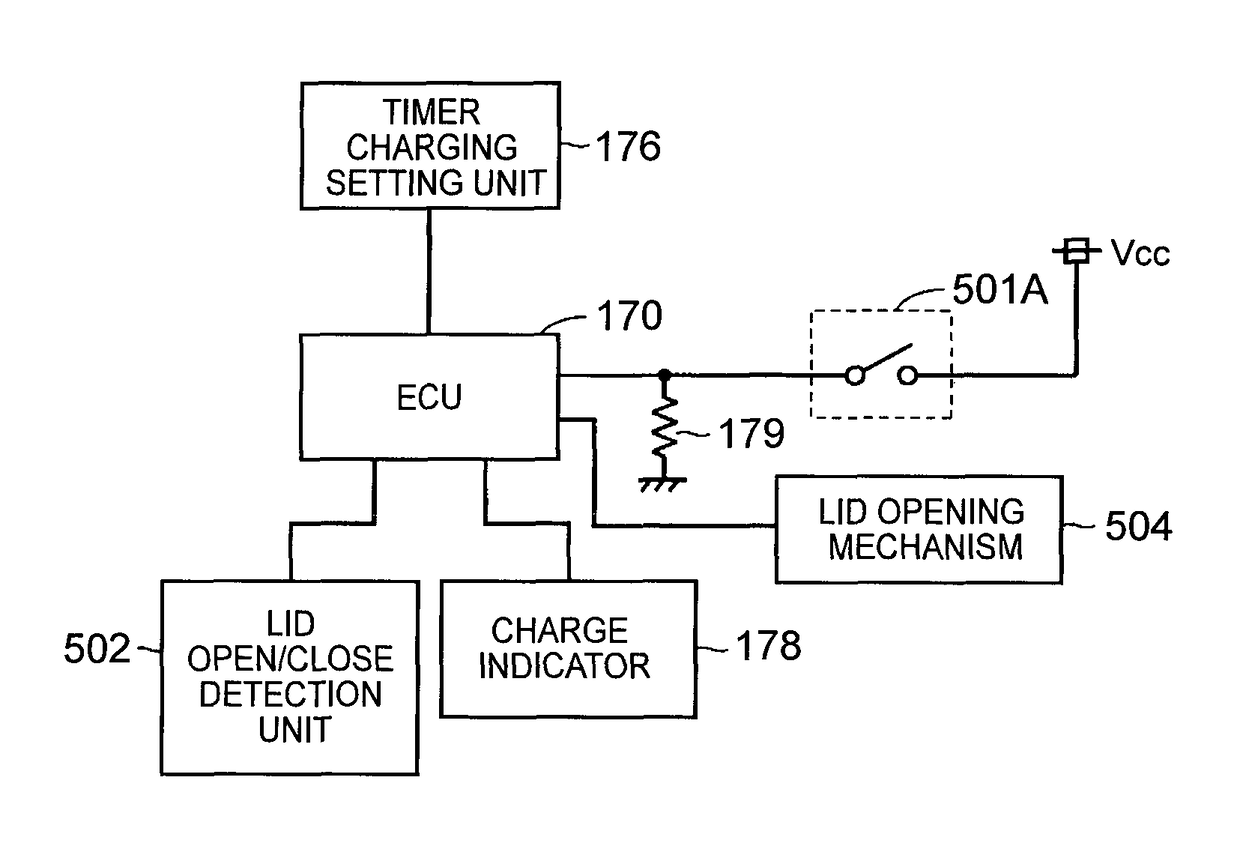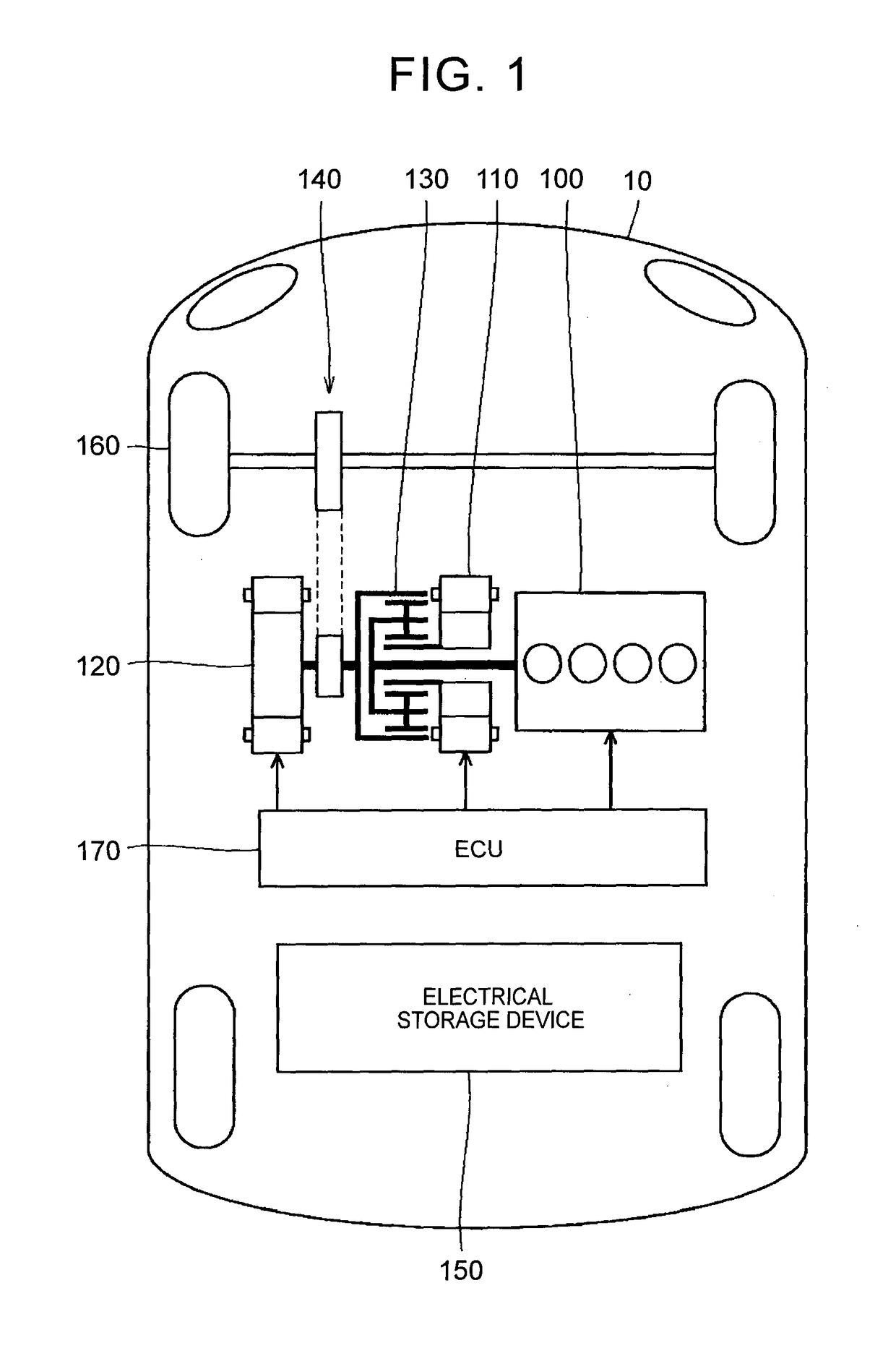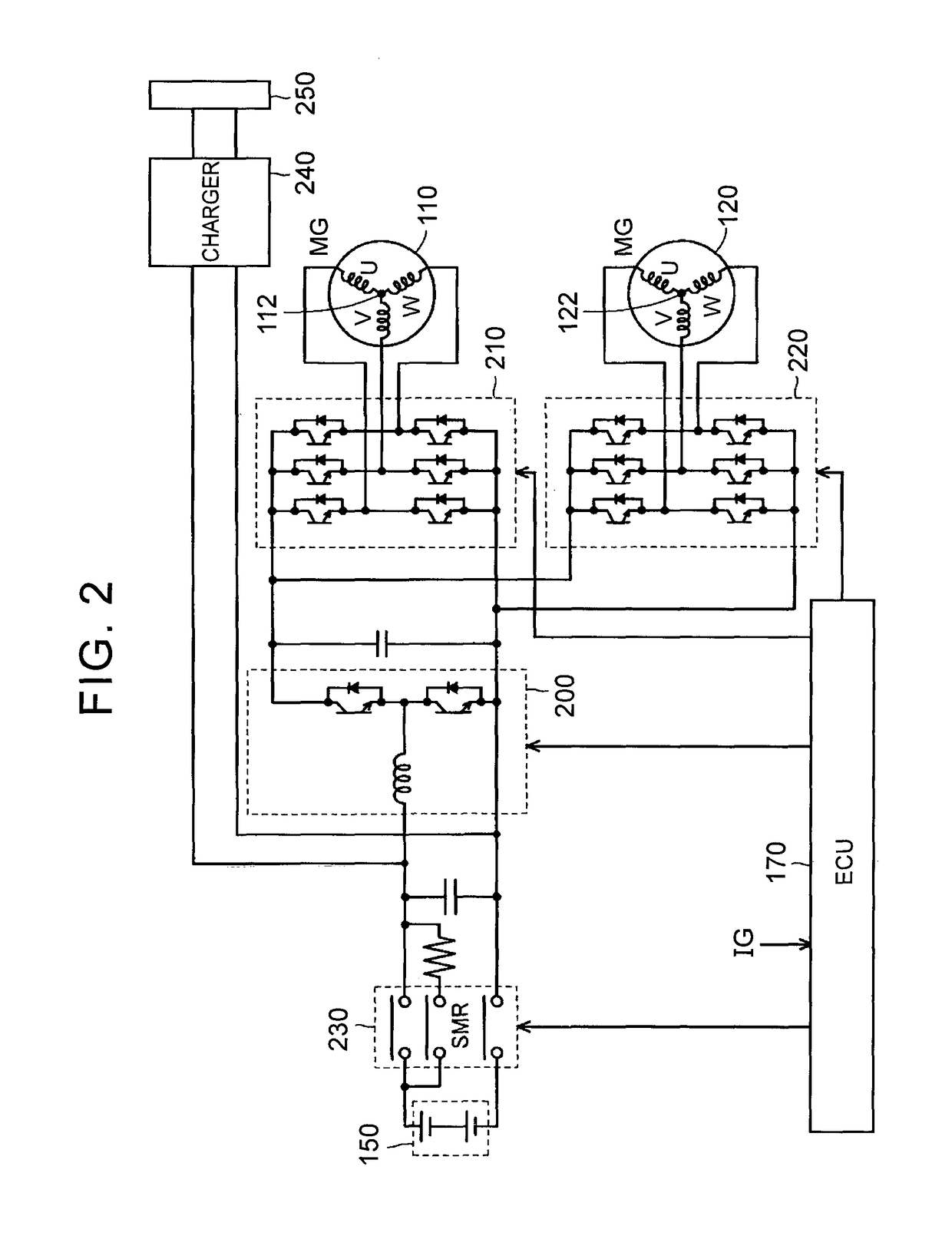Charging device for a vehicle mounted electrical storage device
a charging device and electrical storage technology, applied in the direction of electric devices, driver interactions, propulsion using engine-driven generators, etc., can solve the problems of user difficulty in realizing abnormalities, timer setting cannot be cancelled, instant charging cannot be carried out, etc., to achieve any troublesome burden on the user
- Summary
- Abstract
- Description
- Claims
- Application Information
AI Technical Summary
Benefits of technology
Problems solved by technology
Method used
Image
Examples
first embodiment
[0045]First, the configuration of an externally chargeable vehicle will be described. FIG. 1 is an overall block diagram of a hybrid vehicle that is shown as an example of the vehicle according to the embodiment of the invention. In the following description, the hybrid vehicle may be simply referred to as “vehicle”. In addition, the hybrid vehicle is illustrative. The invention is also applicable to an electric vehicle, a fuel-cell vehicle, and the like, as long as an electrical storage device is mounted on the vehicle and the vehicle is configured to be chargeable from a device outside the vehicle.
[0046]As shown in FIG. 1, the hybrid vehicle 10 includes an engine 100, a motor generator (MG) 110, an MG 120, a power split mechanism 130, a speed reduction gear 140, an electrical storage device 150, drive wheels 160 and an electronic control unit (ECU) 170.
[0047]The engine 100, the MG 110 and the MG 120 are coupled to the power split mechanism 130. The hybrid vehicle 10 travels on dr...
second embodiment
[0123]However, it is presumable that, depending on the user, a frequency at which timer charging is carried out is low. In the second embodiment, the case where the charging system is designed or set so as not to carry out timer charging even when the time of the timer is set unless otherwise specified and so as to carry out timer charging only when operation to enable the timer is performed will be described. In such a case, a switch for enabling the timer (hereinafter, referred to as timer determination switch) is required instead of the timer cancellation switch.
[0124]The configurations shown in FIG. 4 and FIG. 5 are also the same in the second embodiment. However, the way of usage of the switch 177 regarding timer setting is different.
[0125]FIG. 12 is a flowchart for illustrating how the ECU uses the switch in different ways according to the second embodiment. As shown in FIG. 4 and FIG. 12, initially, when the process is started, the ECU 170 determines in step S21 whether the c...
third embodiment
[0145]FIG. 18 is a flowchart for illustrating how the ECU uses the switch in different ways according to the As shown in FIG. 16 and FIG. 18, initially, when the process is started, the ECU 170 determines in step S21 whether the charging cable is connected to the inlet 250. The ECU 170 is able to determine whether the charging cable unit 300 is connected on the basis of the state of the signal PISW or the signal CPLT shown in FIG. 3.
[0146]In step S51, when it is determined that the charging cable unit 300 is not connected to the inlet 250, the process proceeds to step S52; whereas, when it is determined that the charging cable unit 300 is connected, the process proceeds to step S53.
[0147]In step S52, the ECU 170 determines whether a lid open / close detection unit 502 has detected that the lid is open. In step S52, when it has been detected that the lid is open, the process proceeds to step S53; whereas, when it has been detected that the lid is closed, the process proceeds to step S...
PUM
 Login to View More
Login to View More Abstract
Description
Claims
Application Information
 Login to View More
Login to View More - Generate Ideas
- Intellectual Property
- Life Sciences
- Materials
- Tech Scout
- Unparalleled Data Quality
- Higher Quality Content
- 60% Fewer Hallucinations
Browse by: Latest US Patents, China's latest patents, Technical Efficacy Thesaurus, Application Domain, Technology Topic, Popular Technical Reports.
© 2025 PatSnap. All rights reserved.Legal|Privacy policy|Modern Slavery Act Transparency Statement|Sitemap|About US| Contact US: help@patsnap.com



